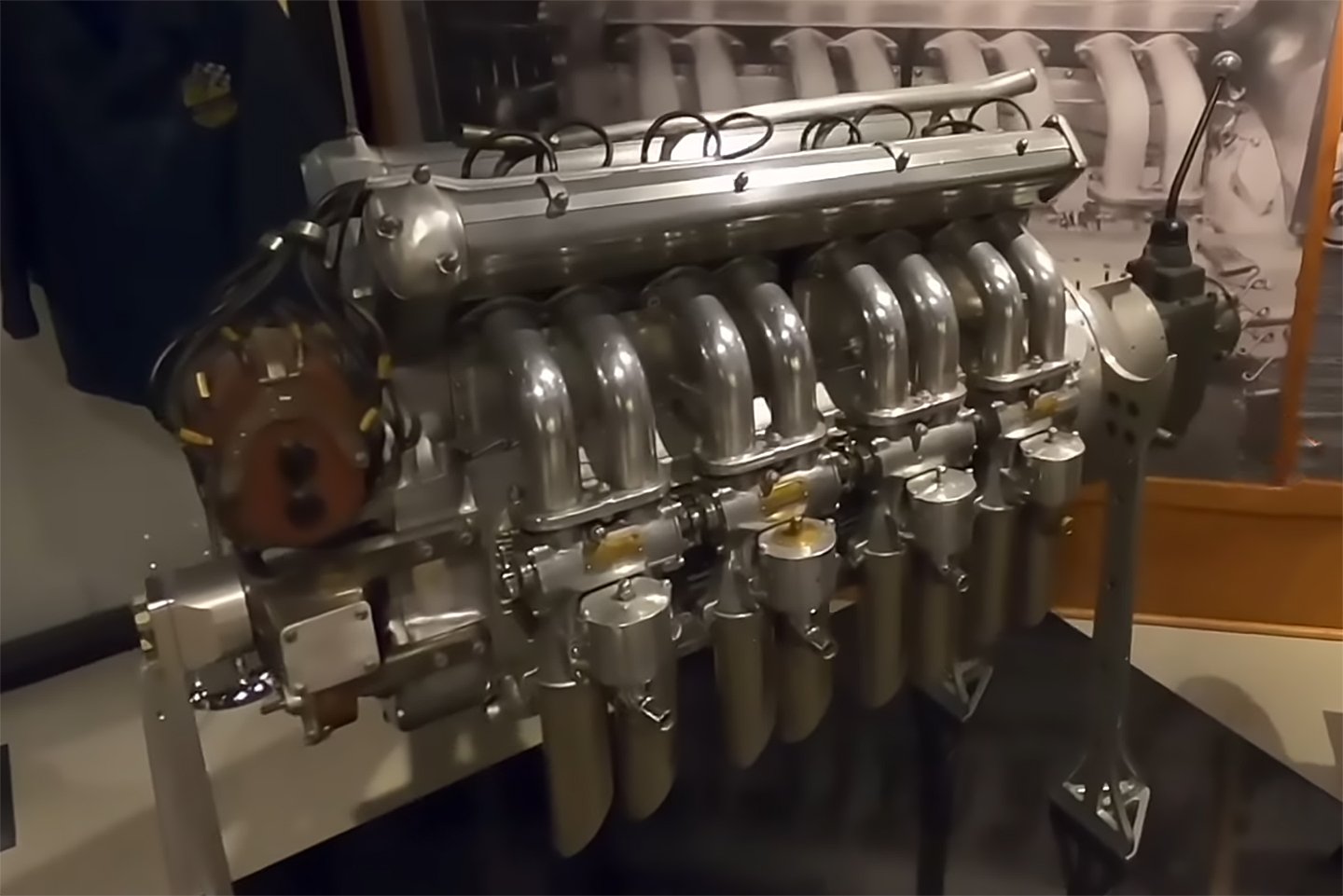Every time we bring up Volkswagen’s VR line of engines, the comments section of social media explodes with people who want to argue that a VR engine isn’t actually a V engine (yes, it is), or that the line of narrow-bank-angle engines should be called something else. Well, one of the not-so-common comments that pops up, is that Volkswagen wasn’t the first to create a narrow-V engine that uses a single cylinder head for both cylinder banks. Well, we have to wonder if VisioRacer didn’t read those comments, as he recently made a video discussing those pre-Volkswagen VR engines, almost as if on cue.
Lancia Lambda V4
Over 100 years ago, long before the marketing term “VR engine” had been dreamt of, Lancia played around with the concept of a compact engine design, with a 20-degree cylinder angle V4, arranged in two distinct, offset banks, compressing a traditional four-cylinder engine into a more compact footprint for increased mounting versatility. The original Lamda engines were available in three displacements — 2.1, 2.4, and 2.6 liters — all sharing the same 120mm (4.724 inch) stroke. The Lambda pioneered the narrow-angle V4 engine from Lancia, and resulted in seven total iterations, lasting through the 1970s.

This sketch comes from Lancia’s hypothetical narrow-bank V12 engine design. Unfortunately, the design never made it into any kind of production.
Lancia Trikappa
The success of the Lambda design led to the firm scaling up the design to eight and twelve-cylinder models on paper. However, it was the V8 Trikappa engine that would emerge off the drawing board into reality first, for the 1922 model year.
The 4.6-liter (280 ci) V8 had a 14-degree bank angle with offset 75mm (2.953-inch) bores, coupled with a 130mm (5.118-inch) stroke, for a massively undersquare bottom end. Up top, it had a single cylinder head spanning both banks, with a single overhead cam, and two valves per cylinder. That all combined, allowing the Trikappa to make a whopping 98 horsepower at 2,500 rpm. Not all that impressive by today’s standards, but a century ago… wow.

The 1922 Lancia Trikappa is the first of the automaker’s narrow-bank V8s that used a single cylinder head. The Trikappa uses a single overhead cam to actuate the intake and exhaust valves.
Lancia Dilambda
Six years later, Lancia would again debut a narrow-angle V8 engine in the Dilambda (starting to pick up on the Lancia naming convention yet?). This version had less displacement at only 4.0 liters (242 ci), thanks to the 79.37mm (3.125 inch) bores and 100mm (3.937 inch) stroke packed into a wider 24-degree bank angle. Like the Trikappa before it and Volkswagen’s VR engines after it, the Dilambda again used a single cylinder head for both cylinder banks, albeit with an overhead valve configuration. The Dilambda picked up a little more power, to the tune of 101 horsepower at 4,000 rpm, with a rather unique side-draft carburetor that fed directly into the side of the block.

The Dilambda engine still used a single cylinder head, but a much more complicated overhead valve configuration.
Lancia Astura
The last series of narrow-bank V8 engines from Lancia carried the Astura nameplate. The first engine in the Astura lineup powered the 1931-’32 “First Series” and 1932-’33 “Second Series” cars. This variant displaced 2.6 liters with a 19-degree bank angle, and only made 72 horsepower. The second variant powered the 1933-’37 “Third Series” and 1937-’39 “Fourth Series cars. It had a larger 3.0-liter displacement, with a narrower 17-degree bank angle, producing 82 horsepower. The Astura engines had a much more traditional carburetor location at the top of the valve cover, and other than the bank angles, displacements, and power outputs, were relatively similar to the previous Trikappa single overhead cam narrow-angle V8 engine designs,
So, while Volkswagen never produced a VR4 or VR8 engine, Lancia never made a narrow V5 or V6 engine either. Apparently, zee Germans didn’t invent the narrow-bank-angle, single-cylinder V engine; it was the Italians. But, it could be argued that the Germans perfected it.
Can you imagine if VW had actually made an eight-cylinder VR engine though?





